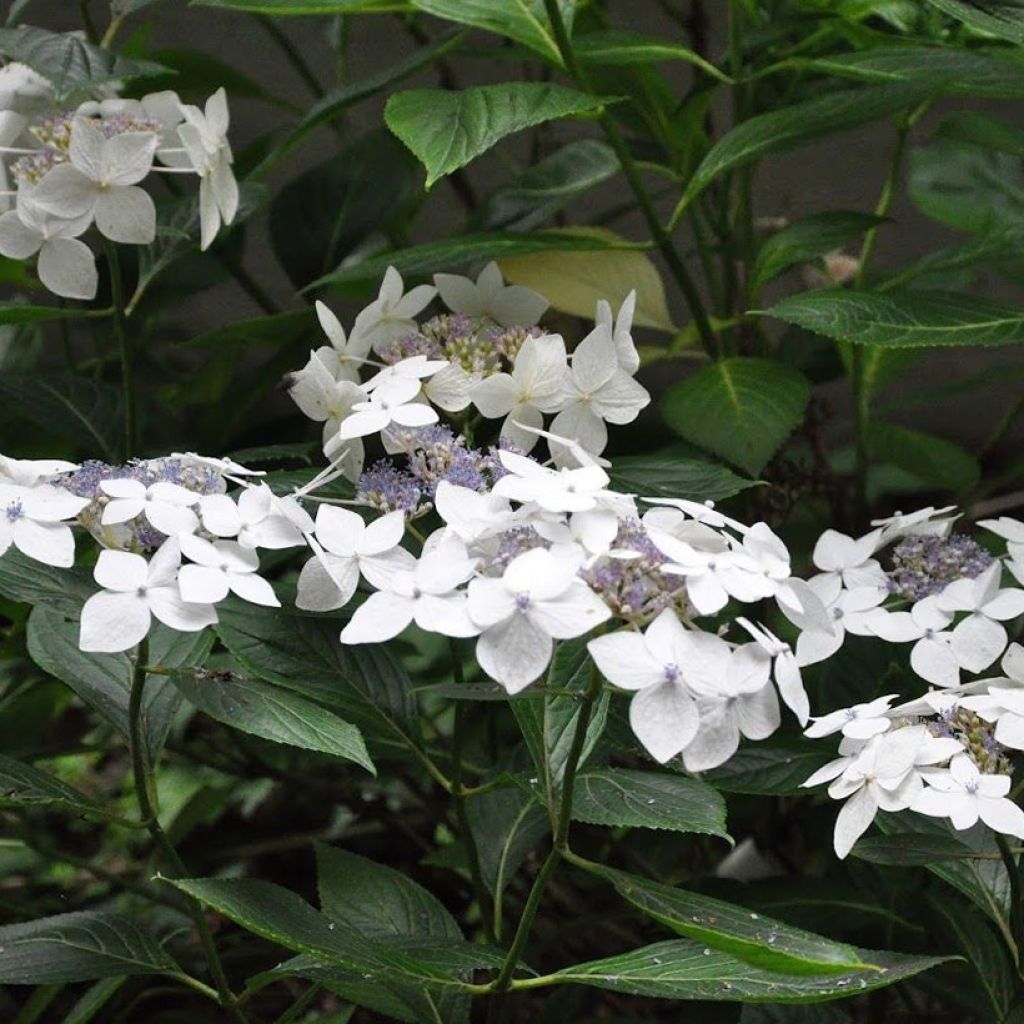

Hydrangea macrophylla Lanarth White
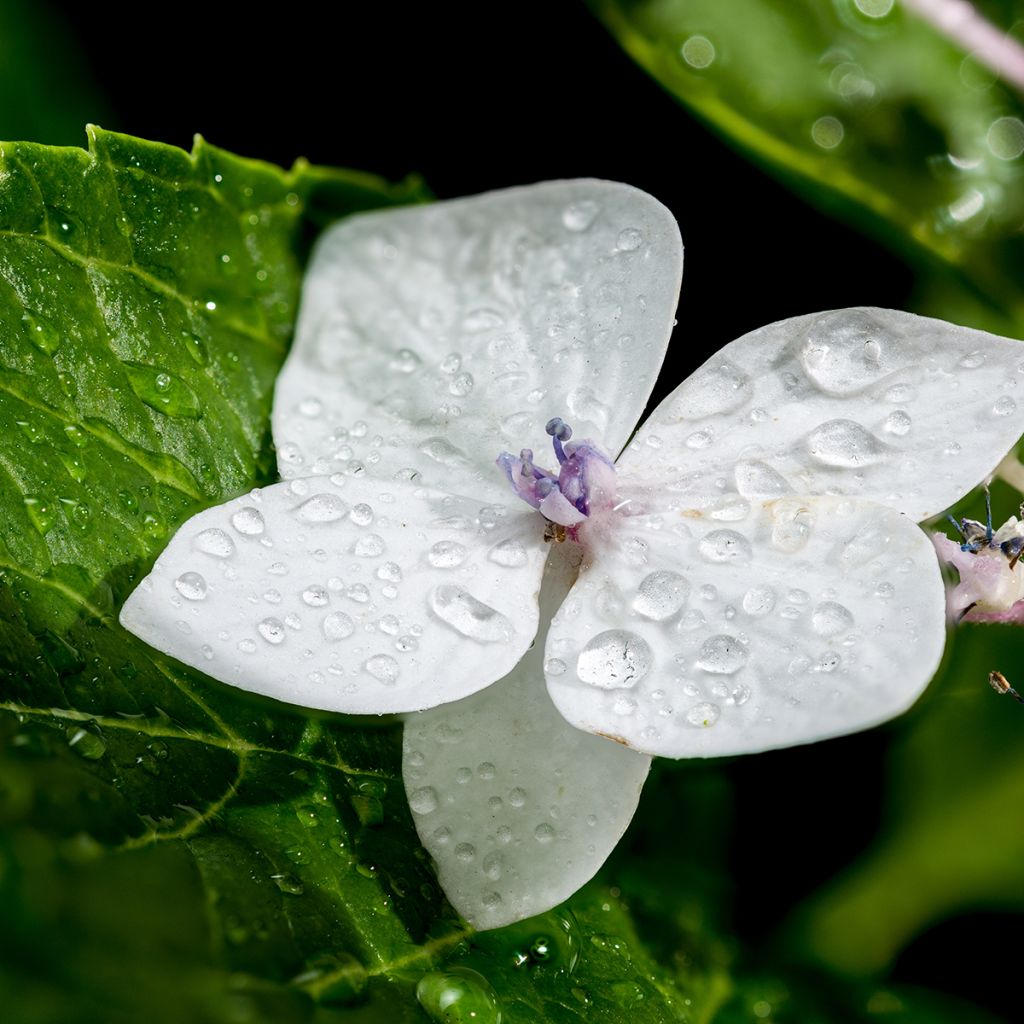

Hydrangea macrophylla Lanarth White
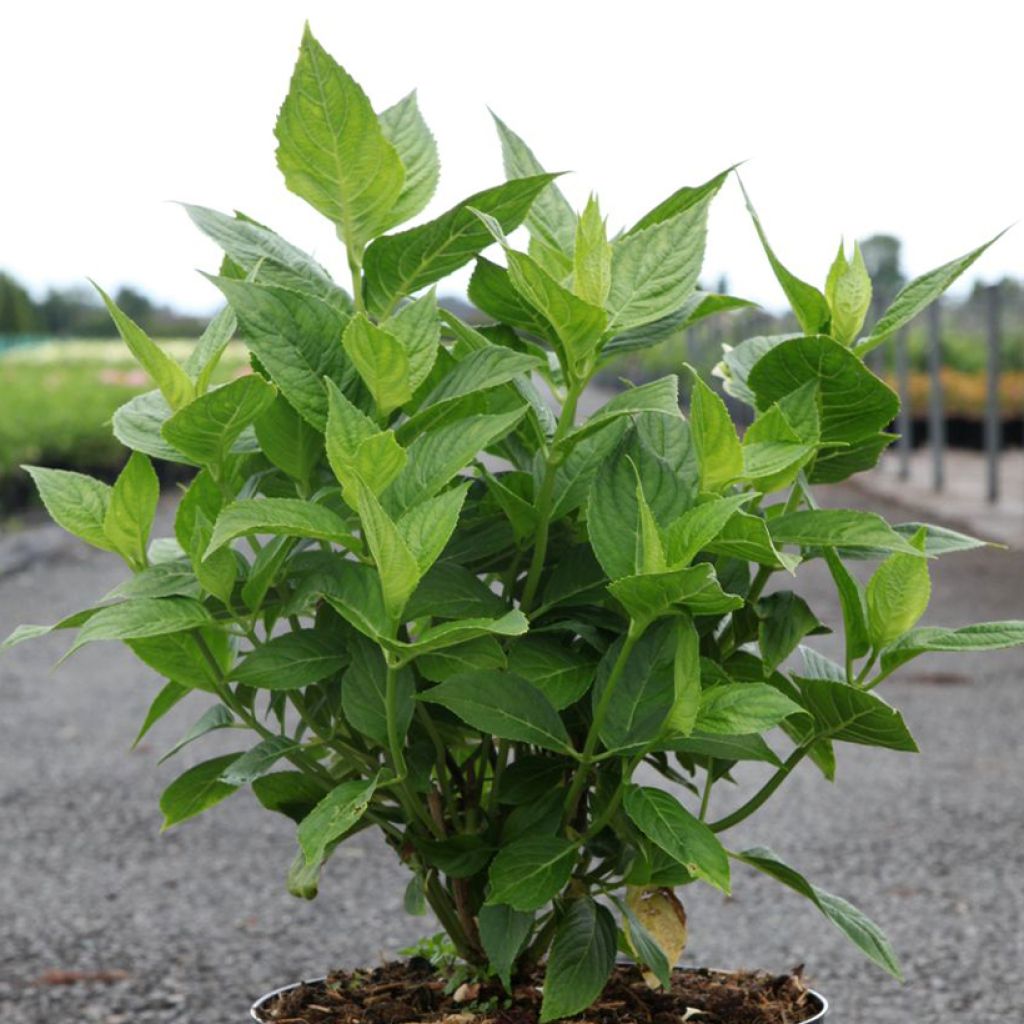

Hydrangea macrophylla Lanarth White
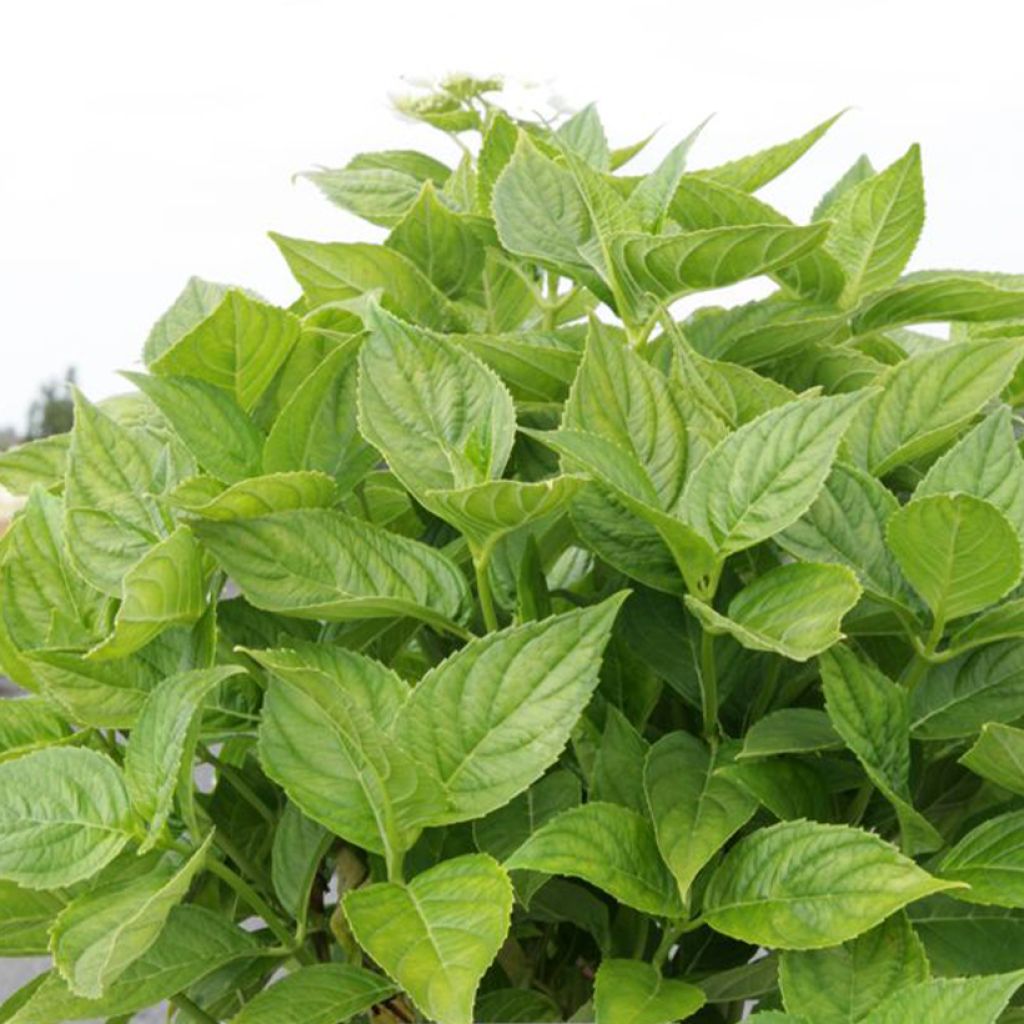

Hydrangea macrophylla Lanarth White
Hydrangea macrophylla Lanarth White
Hydrangea macrophylla Lanarth White
Bigleaf Hydrangea, French Hydrangea
Hello, the young plant arrived chlorotic and in very poor condition... What a shame.
Jean Christophe , 03/09/2023
Special offer!
Receive a €20 voucher for any order over €90 (excluding delivery costs, credit notes, and plastic-free options)!
1- Add your favorite plants to your cart.
2- Once you have reached €90, confirm your order (you can even choose the delivery date!).
3- As soon as your order is shipped, you will receive an email containing your voucher code, valid for 3 months (90 days).
Your voucher is unique and can only be used once, for any order with a minimum value of €20, excluding delivery costs.
Can be combined with other current offers, non-divisible and non-refundable.
Home or relay delivery (depending on size and destination)
Schedule delivery date,
and select date in basket
This plant carries a 24 months recovery warranty
More information
We guarantee the quality of our plants for a full growing cycle, and will replace at our expense any plant that fails to recover under normal climatic and planting conditions.
Would this plant suit my garden?
Set up your Plantfit profile →
Description
Hydrangea macrophylla 'Lanarth White' is a flat-head hydrangea with white flowers bearing a pink or blue heart depending on the acidity of the soil. This old variety is still relevant today because its long summer flowering is valued in the garden when few bushes are blooming. It forms a compact bush of about 1.3 m (4.3 ft) in all directions, with healthy green foliage. Hardy down to -15° C (5° F), this hydrangea should be placed in a shady position, in neutral to acidic soil. It is easy to grow, suitable for coastal areas, and only requires annual pruning in spring and watering in summer to keep the soil fresh.
Hydrangea macrophylla is a deciduous bush native to Japan, where its beauty has been appreciated for centuries and mentioned in poems dating back to the 8th century! In a country that attaches great importance to plants, festivals are even dedicated to this bush. Hydrangeas belong to the Hydrangeaceae family. 'Lanarth White' is an old variety discovered in Great Britain in 1947, in Lanarth (Cornwall) by Michael Williams. Its coastal origin gives it good wind resistance.
It is a flat-headed variety ("lace-cap"), with the centre formed by very small tight fertile flowers, surrounded by simple white sterile flowers. The fertile flowers turn blue in acidic soil and pink in neutral to alkaline soil (the white colour is not affected by the soil pH). This particular inflorescence is visually quite different from the large balls carried by round-headed Hydrangea macrophylla. In fact, this type of lace-cap hydrangea can be confused with certain Viburnums by beginners (Viburnum plicatum, V. sargentii 'Onondaga') even though these two genera belong to separate botanical families.
A rather compact bush, about 1.3 m (4.3 ft) in all directions, this hydrangea, like all Hydrangea macrophylla, is not strictly an ericaceous plant, but prefers neutral to acidic soils. A semi-shaded to shaded position in a warm climate will suit it well, as well as watering in summer because it does not like drought (of the soil and atmosphere), which can cause its leaves to wither. Care consists of annual pruning in spring, before the new leaves emerge. This bush with its long summer flowering is hardy to -15° C (5° F). Severe frosts can damage the tips of the branches, but they easily regrow after spring pruning. Easy to grow, it can live a very long time.
'Lanarth White' will brighten up shaded areas of the garden, under large trees or in woodland. It will go perfectly with shade-loving perennials such as Hostas with large leaves, palmate-leaved Rodgersias, or Solomon's Seals with their unique flowering. All these plants with a striking habit will enhance the flowering of our hydrangea. The little-known Sarcococcas with their delicately scented winter flowering will also be good companions, as well as the delicate and romantic bell-shaped flowers of Enkianthus campanulatus.
Report an error about the product description
Hydrangea macrophylla Lanarth White in pictures
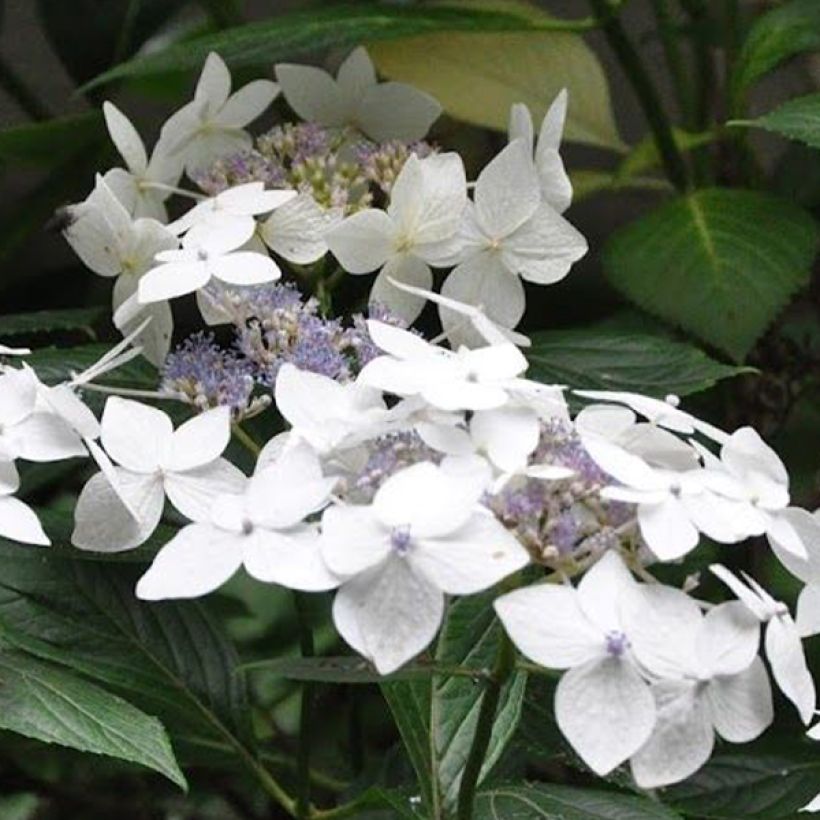

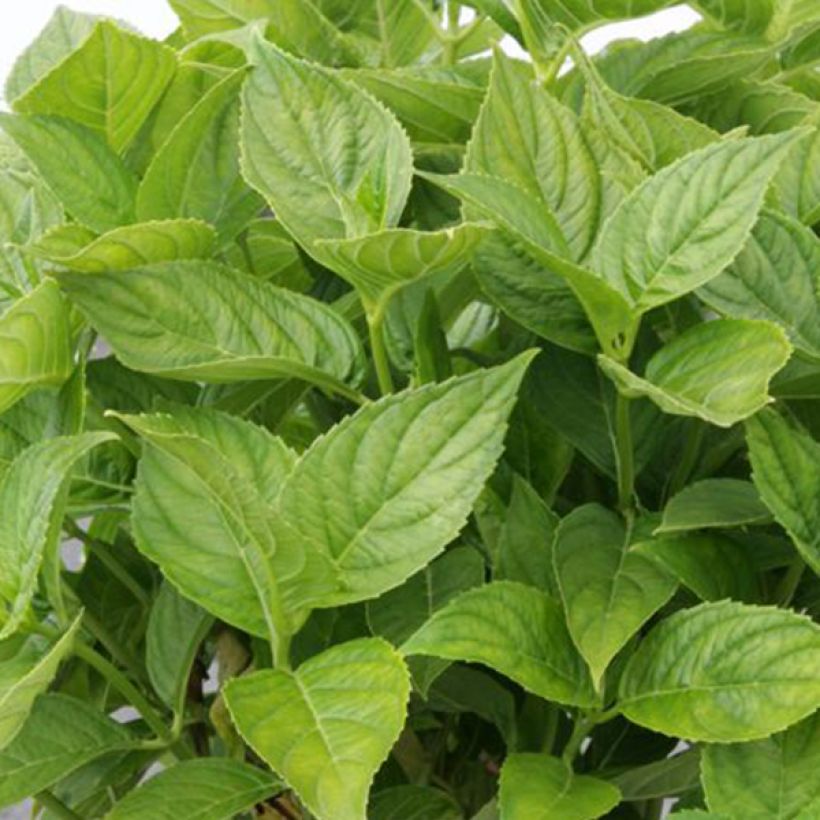

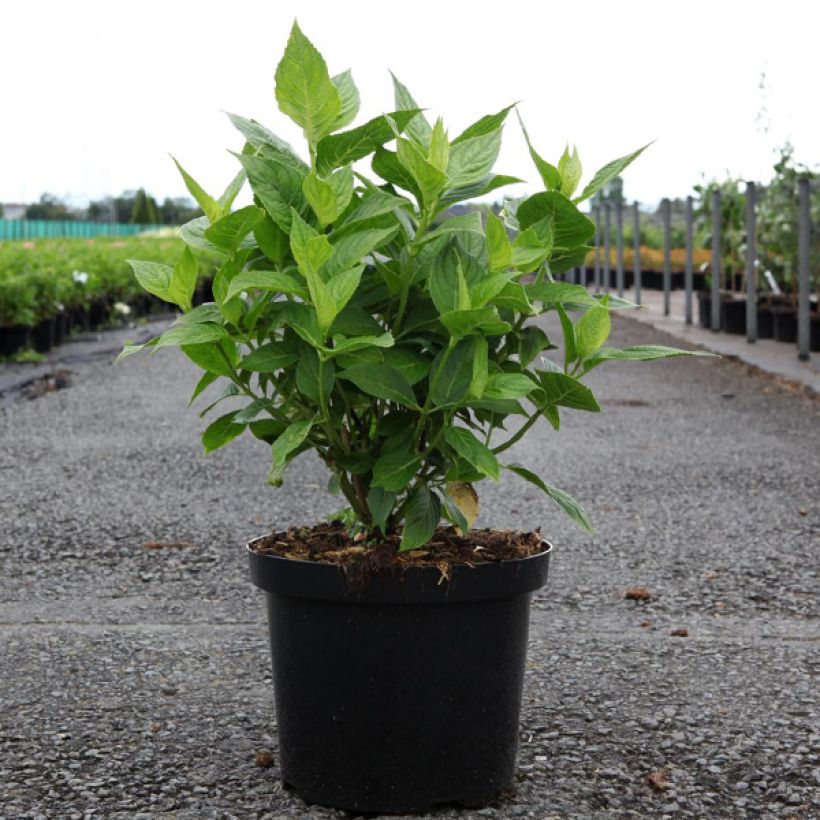

Plant habit
Flowering
Foliage
Botanical data
Hydrangea
macrophylla
Lanarth White
Hydrangeaceae
Bigleaf Hydrangea, French Hydrangea
Cultivar or hybrid
Planting and care
Plant in spring or early autumn, preferably in a slightly shaded position, for example against an east-facing wall or even north-facing. In very cold areas, it may be prudent to protect its stump with a thick mulch. Keep it sheltered from cold, drying winds. It does not necessarily require ericaceous soil, but appreciates a deep, moist but well-drained, and fairly fertile soil. In poor soil, enrich with a good base fertiliser before planting, and mix the existing soil with a substrate containing some compost.
If planting is done at the base of a protective wall and the soil is dry, place the root ball at least 30 cm to 40 cm (11.8 in to 15.7 in) away from it and incorporate a significant amount of well-decomposed compost to better retain moisture in the soil. After planting, beware of slugs, which are quite fond of young leaves. Very hardy, it can be planted in cold regions without fear. Water regularly in hot periods to prevent the foliage from wilting during dry spells.
Planting period
Intended location
Care
-
, onOrder confirmed
Reply from on Promesse de fleurs
Haven't found what you were looking for?
Hardiness is the lowest winter temperature a plant can endure without suffering serious damage or even dying. However, hardiness is affected by location (a sheltered area, such as a patio), protection (winter cover) and soil type (hardiness is improved by well-drained soil).

Photo Sharing Terms & Conditions
In order to encourage gardeners to interact and share their experiences, Promesse de fleurs offers various media enabling content to be uploaded onto its Site - in particular via the ‘Photo sharing’ module.
The User agrees to refrain from:
- Posting any content that is illegal, prejudicial, insulting, racist, inciteful to hatred, revisionist, contrary to public decency, that infringes on privacy or on the privacy rights of third parties, in particular the publicity rights of persons and goods, intellectual property rights, or the right to privacy.
- Submitting content on behalf of a third party;
- Impersonate the identity of a third party and/or publish any personal information about a third party;
In general, the User undertakes to refrain from any unethical behaviour.
All Content (in particular text, comments, files, images, photos, videos, creative works, etc.), which may be subject to property or intellectual property rights, image or other private rights, shall remain the property of the User, subject to the limited rights granted by the terms of the licence granted by Promesse de fleurs as stated below. Users are at liberty to publish or not to publish such Content on the Site, notably via the ‘Photo Sharing’ facility, and accept that this Content shall be made public and freely accessible, notably on the Internet.
Users further acknowledge, undertake to have ,and guarantee that they hold all necessary rights and permissions to publish such material on the Site, in particular with regard to the legislation in force pertaining to any privacy, property, intellectual property, image, or contractual rights, or rights of any other nature. By publishing such Content on the Site, Users acknowledge accepting full liability as publishers of the Content within the meaning of the law, and grant Promesse de fleurs, free of charge, an inclusive, worldwide licence for the said Content for the entire duration of its publication, including all reproduction, representation, up/downloading, displaying, performing, transmission, and storage rights.
Users also grant permission for their name to be linked to the Content and accept that this link may not always be made available.
By engaging in posting material, Users consent to their Content becoming automatically accessible on the Internet, in particular on other sites and/or blogs and/or web pages of the Promesse de fleurs site, including in particular social pages and the Promesse de fleurs catalogue.
Users may secure the removal of entrusted content free of charge by issuing a simple request via our contact form.
The flowering period indicated on our website applies to countries and regions located in USDA zone 8 (France, the United Kingdom, Ireland, the Netherlands, etc.)
It will vary according to where you live:
- In zones 9 to 10 (Italy, Spain, Greece, etc.), flowering will occur about 2 to 4 weeks earlier.
- In zones 6 to 7 (Germany, Poland, Slovenia, and lower mountainous regions), flowering will be delayed by 2 to 3 weeks.
- In zone 5 (Central Europe, Scandinavia), blooming will be delayed by 3 to 5 weeks.
In temperate climates, pruning of spring-flowering shrubs (forsythia, spireas, etc.) should be done just after flowering.
Pruning of summer-flowering shrubs (Indian Lilac, Perovskia, etc.) can be done in winter or spring.
In cold regions as well as with frost-sensitive plants, avoid pruning too early when severe frosts may still occur.
The planting period indicated on our website applies to countries and regions located in USDA zone 8 (France, United Kingdom, Ireland, Netherlands).
It will vary according to where you live:
- In Mediterranean zones (Marseille, Madrid, Milan, etc.), autumn and winter are the best planting periods.
- In continental zones (Strasbourg, Munich, Vienna, etc.), delay planting by 2 to 3 weeks in spring and bring it forward by 2 to 4 weeks in autumn.
- In mountainous regions (the Alps, Pyrenees, Carpathians, etc.), it is best to plant in late spring (May-June) or late summer (August-September).
The harvesting period indicated on our website applies to countries and regions in USDA zone 8 (France, England, Ireland, the Netherlands).
In colder areas (Scandinavia, Poland, Austria...) fruit and vegetable harvests are likely to be delayed by 3-4 weeks.
In warmer areas (Italy, Spain, Greece, etc.), harvesting will probably take place earlier, depending on weather conditions.
The sowing periods indicated on our website apply to countries and regions within USDA Zone 8 (France, UK, Ireland, Netherlands).
In colder areas (Scandinavia, Poland, Austria...), delay any outdoor sowing by 3-4 weeks, or sow under glass.
In warmer climes (Italy, Spain, Greece, etc.), bring outdoor sowing forward by a few weeks.
































